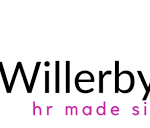How to ensure your team and yourself stay informed regarding implementing progressive attitudes towards gender identity within your business.

Photo by KOBU Agency on Unsplash
According to census data, more than 250,000 people identify as transgender in the United Kingdom. Therefore, it is important to explain how to effectively understand gender identity and support your colleagues.
Understanding Gender Identity
It is first important to outline the difference between gender and sex to avoid any confusion when discussing issues with employees. The World Health Organisation defines sex as “the different biological and physiological characteristics of males and females, such as reproductive organs, chromosomes, hormones, etc.”
Gender is defined as “the socially constructed characteristics of women and men – such as norms, roles and relationships of and between groups of women and men. It varies from society to society and can be changed”.
A person may choose to identify in whichever way they desire; there are an infinite number of genders. A persons gender, including those who’s gender does not align with the gender they were assigned at birth, is a protected characteristic under the Equality Act 2010 with the EHRC stating that “You can be at any stage in the transition process – from proposing to reassign your gender, to undergoing a process to reassign your gender, or having completed it”.
Transgender is the phrase often used to describe ‘people whose gender identity and/or expression is different from cultural expectations based on the sex they were assigned at birth’ however, not every individual’s gender fits into this definition. These are the gender identities which are most likely to be encountered within your workplace however, this is not a comprehensive list as gender is a spectrum and unique to each person.
Cisgender: someone who’s identifies as the gender they were assigned at birth
Transgender: someone who does not identify as the gender they were assigned at birth
Non-binary: someone who’s gender is not within the gender binary and may identify as multiple genders or none
Agender: someone who does not identify with any particular gender
Gender-fluid: someone who’s gender identity changes constantly and fluidly
How to Create a Gender-Inclusive Environment
Using Appropriate Terminology for Each Individual
This includes using gender-neutral language throughout the workplace and using gender-neutral pronouns until an individual makes their preferred pronouns known to you. In customer service roles, it is important to create an environment which ensures that members of the public are also as respectful as possible towards each employee, regardless of gender. An important element of this is normalising the use of inclusive language across your business.
Establishing a Zero Tolerance Policy for Discrimination
Encouraging your employees to support each other when sharing experiences of gender discrimination in order to cultivate a workplace which celebrates diversity. It should be the responsibility of all employees to maintain a safe environment for all gender identities. Training regarding diversity and inclusiveness is an effective means of ensuring your team are aware of these responsibilities.
Educate Employees on Key Issues and Terminology
In order to effectively implement any positive changes regarding equality in your business, it is important that all of your employees are informed about relevant issues. Educational session where you explain to your team key terminology and definitions is vital as it will ensure that they are able to create a comfortable environment for not just their colleagues but also members of the public. These session should also outline how to approach the topic of gender identity in conversation in a considerate manner. It is important that you also explain any language that could be considered harmful when discussing gender identity so team members can spot these behaviours, both from colleagues and perhaps themselves.
Reviewing recruitment procedures
Gender diversity should also be part of your recruitment process by including gender-neutral language across all role requirements and job descriptions in order to ensure that the recruitment process is standardised and fair. All candidate screenings and interviews should not discriminate against an individual because of their gender identity, in the same way as all other protected characteristics under the Equality Act 2010. This also applies to any internal hiring processes and promotions.
Listen to employee feedback
It is vital that you listen to any concerns which your employees may have regarding gender discrimination within the workplace. Issues should be dealt with promptly, especially regarding harassment and victimisation. You should also use any employee feedback to influence future policy changes aforementioned diversity training.
The Advantages of a Gender-Inclusive Workplace
A gender-inclusive workplace will allow employees to work effectively without discrimination. The most important benefit of this for your business is your employees’ self confidence and mental wellbeing will be positively affected by the knowledge that they can work without judgement.
Productivity increases when employees are comfortable within their role, this includes knowing that their individuality is valued and they do not have to worry about discrimination within the workplace.
A reputation as a welcoming environment for individuals of all gender identities will give your business a positive reputation. This is important both as a means of attracting and retaining staff but also as a way of appealing to clients and customers.
Share this:
- Click to email a link to a friend (Opens in new window) Email
- Click to print (Opens in new window) Print
- Click to share on Pinterest (Opens in new window) Pinterest
- Click to share on X (Opens in new window) X
- Click to share on LinkedIn (Opens in new window) LinkedIn
- Click to share on Facebook (Opens in new window) Facebook



